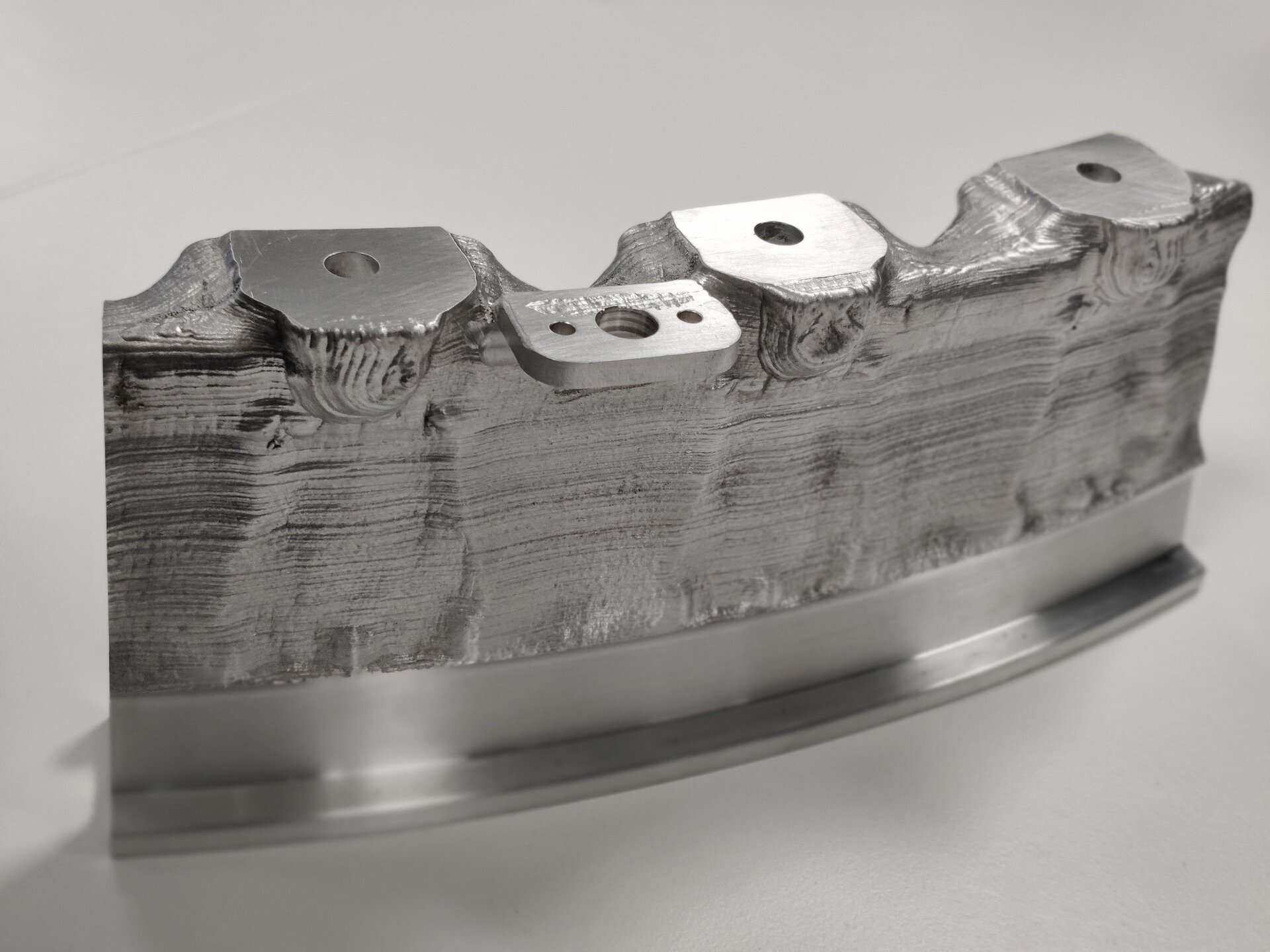Advanced manufacturing framework improves Laser Melting Deposition development
A GSTP activity under the Advanced Manufacturing framework has developed and produced a part with laser melting deposition technology – a process that could eventually be used to manufacture high precision components from powders.
Currently, the additive manufacturing technique, laser melting deposition, is regarded as expensive, but versatile. With this technique, highly complex parts can be manufactured or repaired in an automated fashion and, because the heat input is low, the strength of surrounding material is unaffected. Distortion is also lower than for conventional welding techniques.
At a higher TRL, laser melting deposition could prove to be a strong alternative to die forgings, forged rolled rings or large machined parts thanks to its large deposition rate, positioning range and the little material waste.
But a current concern with this process is that it is very hard to predict the properties of components fabricated using laser melting deposition since there are many variables involved in the process.
The activity, conducted with three Belgian companies, Sonaca, CRM and SIRRIS (BE) called LIRAM (Launch Interface Rings by Additive Manufacturing) demonstrated that this technology could be used to build strong, good quality aluminium parts.
A launch interface ring was used as a case study, since it is a recurrent space part that, if manufactured with reduced lead times and costs, would benefit institutional and commercial missions.
Eventually, a section of an optimized ring was developed and manufactured through laser melting deposition using scalmalloy powder –a high-performance aluminum-magnesium-scandium alloy, developed for additive manufacturing.
This breadboard was then successfully tested with the most critical static load case. The measured displacements were close to the simulation’s predictions and the tested part sustained the load without damage.
To further pursue the development, a complete ring (not just a segment) is targeted for 2023. Other improvements are also proposed, such as the simulation of the process, enhancements to the design and the heat treatments.
The activity G61A-036QTd closed in November 2020.















 Germany
Germany
 Austria
Austria
 Belgium
Belgium
 Denmark
Denmark
 Spain
Spain
 Estonia
Estonia
 Finland
Finland
 France
France
 Greece
Greece
 Hungary
Hungary
 Ireland
Ireland
 Italy
Italy
 Luxembourg
Luxembourg
 Norway
Norway
 The Netherlands
The Netherlands
 Poland
Poland
 Portugal
Portugal
 Czechia
Czechia
 Romania
Romania
 United Kingdom
United Kingdom
 Slovenia
Slovenia
 Sweden
Sweden
 Switzerland
Switzerland


























